Design Yourself
What does it mean to be human? We invited a collective of multidisciplinary artists to explore this idea as part of Life Rewired, our 2019 annual theme.
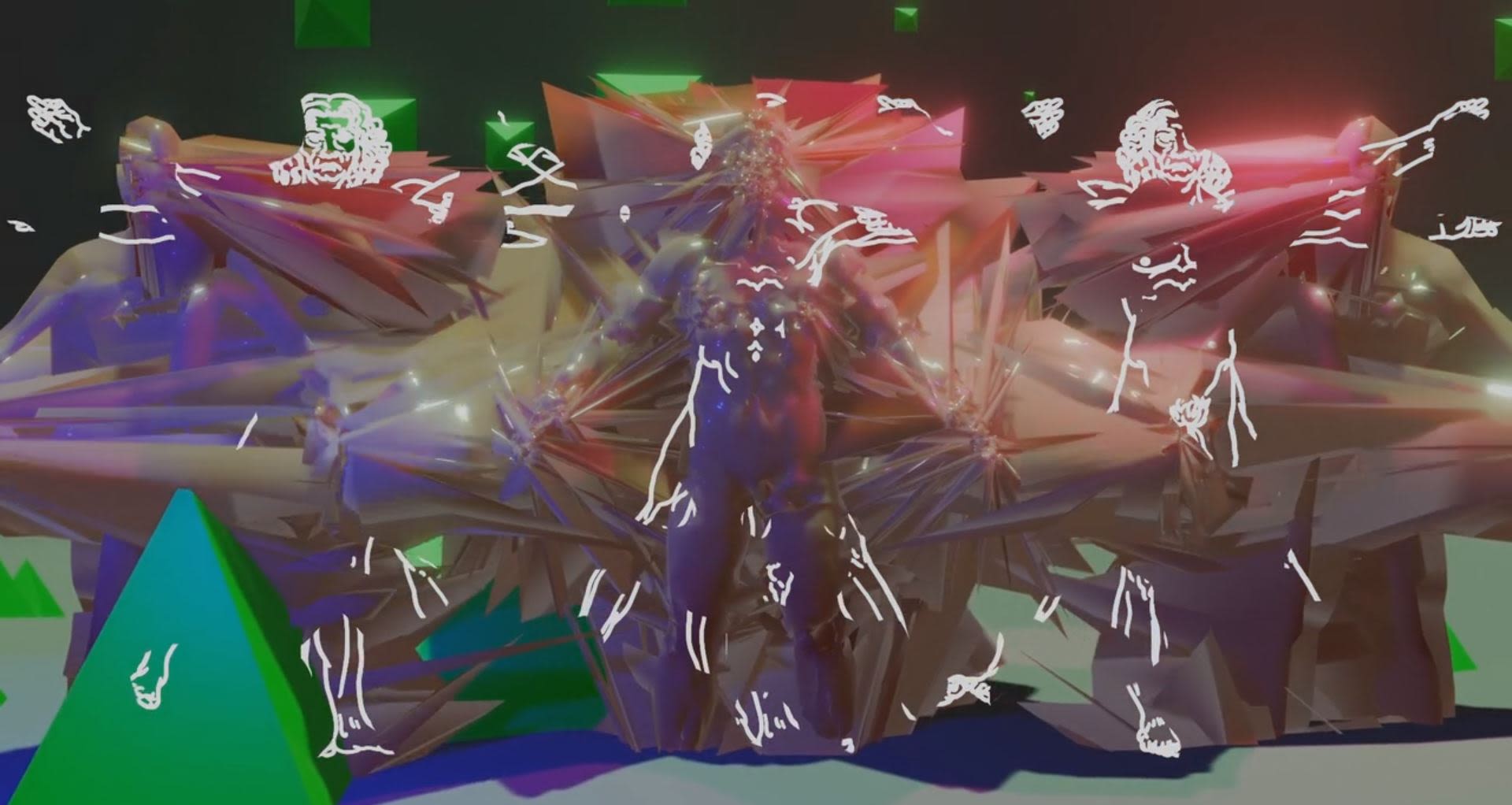
Design Yourself ran across 2019 as part of the Barbican’s annual theme, Life Rewired, a year exploring what it means to be human when technology is changing everything. The artists were led by visual artist Antonio Roberts and supported by Barbican Guildhall Creative Learning. It brought together a collective of artists from different disciplines to create art considering, ‘what does it mean to be human?’
Technological advancements and artificial intelligence have developed areas of research - from posthumanism to pixel data sonification - which the group explored during their mentorship and collaboration with Antonio and in response to workshops with five guest artists.
Barbican Young Poet and Design Yourself member and writer Tice Cin shares the group’s highlights from the experience.
Identity and Augmentation
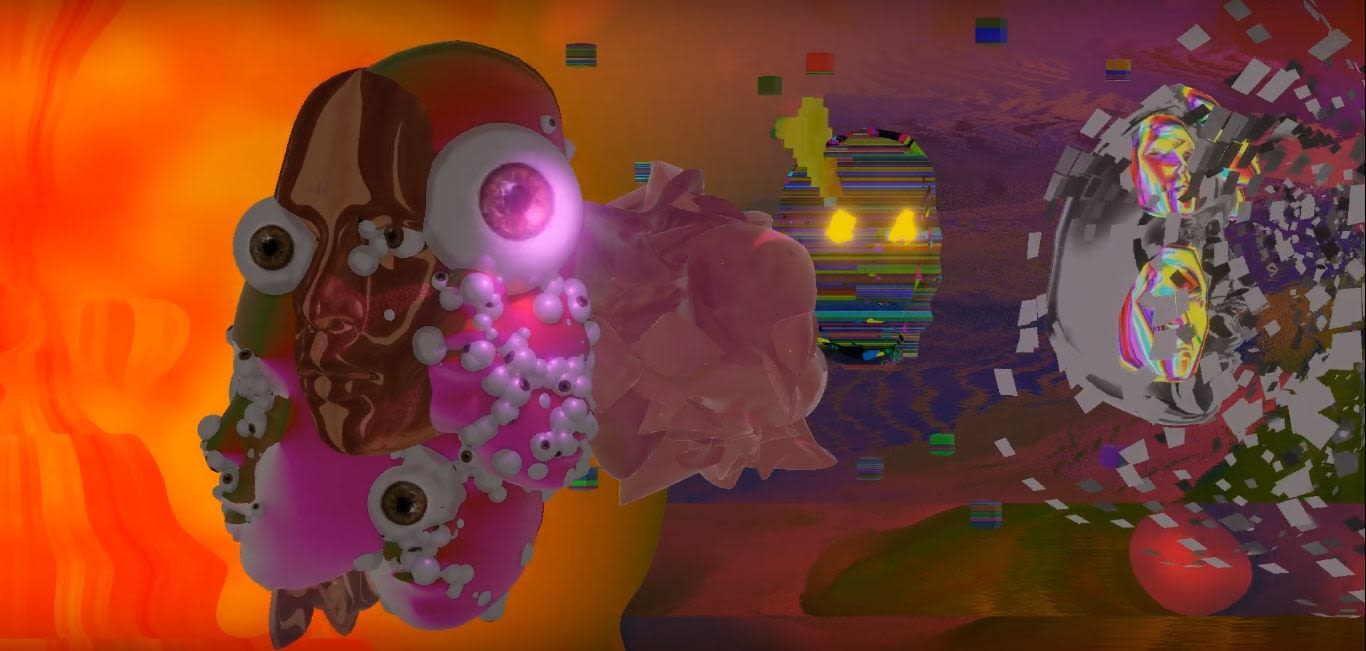
We sparked off our Design Yourself project making masks exploring how people are augmenting their bodies with technology. Antonio introduced us to the plethora of wearable devices that read our bodily functions, present us data and affect our bodies on an external level. We imagined masks as wearable technology that would be able to classify between natural and artificial presences, and others that would scramble surveillance software. Antonio recorded our responses and created a visual interpretation, Augmented Bodies.
Speaking with performance artist Hector Dyer after the session, he wrote how it challenged the way he works with physical materials and objects (he eventually tried to get them to mould to the body and act as ‘extensions’ instead of as costume) –
’Seems like a simple question to ask – ‘what would you change about your body / how would you redesign it?’ – but when you have a ‘blank slate’ it’s actually kind of challenging to know where to start and stop with H+.’
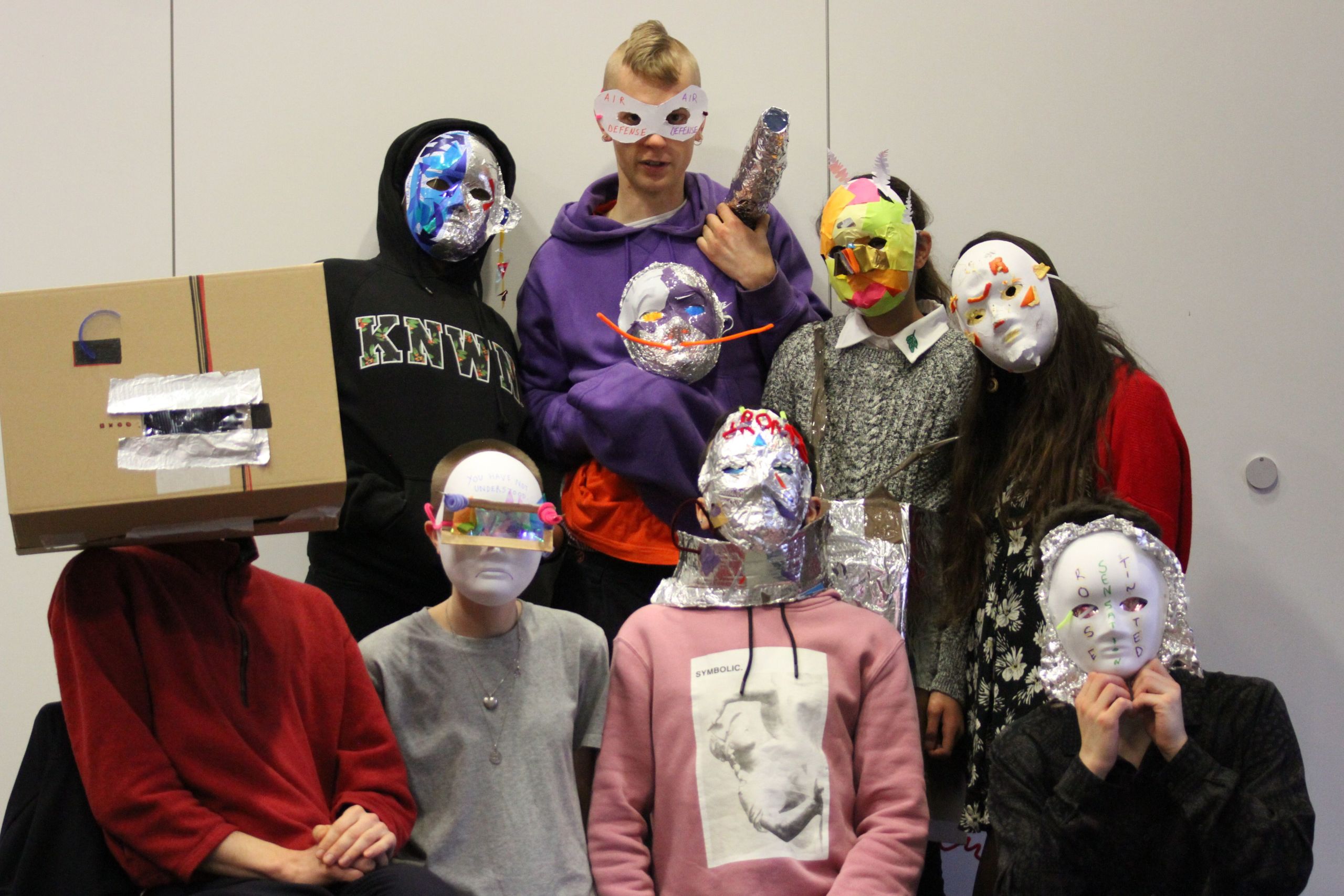
The Design Yourself artist collective, wearing their masks after a day of discussing what they wished they could create. Cleo Thomas, Hector Dyer, Nayla Chouabib, Pietro Bardini, Cosima Cobley-Carr, Tice Cin, Vangelis Trichias and Zack Halpin
The Design Yourself artist collective, wearing their masks after a day of discussing what they wished they could create. Cleo Thomas, Hector Dyer, Nayla Chouabib, Pietro Bardini, Cosima Cobley-Carr, Tice Cin, Vangelis Trichias and Zack Halpin
At a time of polarised rhetoric where the term transhumanism feels synonymous with dystopian ideals, it’s important to consider the potential of transhumanism to achieve feminist, and accessible augmenticism.
During a session with guest artist Laurie Ramsell, we looked at how technology might be integrated into the human body. Chatting with another Design Yourself member Cosima Cobley Carr, she shared how the experience pulled into question our common conceptions of identity: ‘whether it be for enjoyment, such as implanting cameras, or sustainable implants that you can harvest materials/crops from, to integrations that make our bodies less susceptible to pain and health problems (perhaps to avoid the biological act of childbirth) –
’With these integrations, the age-old philosophical questions regarding the nature of personal identity and the mind/body distinction arise.’

The artists create their augmentations with the guidance of Laurie Ramsell
The artists create their augmentations with the guidance of Laurie Ramsell
These conversations around identity and digitality continued all the way through to our last session on data and algorithmic intent with artist and writer Erica Scourti. Erica challenged us. How can identity emerge through the network we interact with? Are we performing to a hidden algorithmic witness? Looking at the POV of a computer and how computers process and 'understand' both personal and impersonal data, it felt hard to ignore the digital as a contemporary condition.
Thinking around our networked condition and the fall out of this, I spoke with Cosima who felt that the session ‘brought together our ideas (both fears and aspirations) of what technology may have in store for our individual and collective identities.’
In the final video, I Never Found Her, Cosima worked with fellow member and composer Pietro Bardini, on a soundscape using a sax line shared by the youngest on our team, Nayla Chouaib. The video shows us phone portraits of another of our collective, filmmaker Vangelis Trichias along with Cosima, lip-syncing along with text to speech software. We hear fragments, ‘I found an android which looked just like her’, to ‘where do I go?’ This searching insistence speaks to the way that our identity can feel impossible to reach, despite technological hacks. We must both protect and maintain our identity.
Personhood and Culture
Reimagining our futures
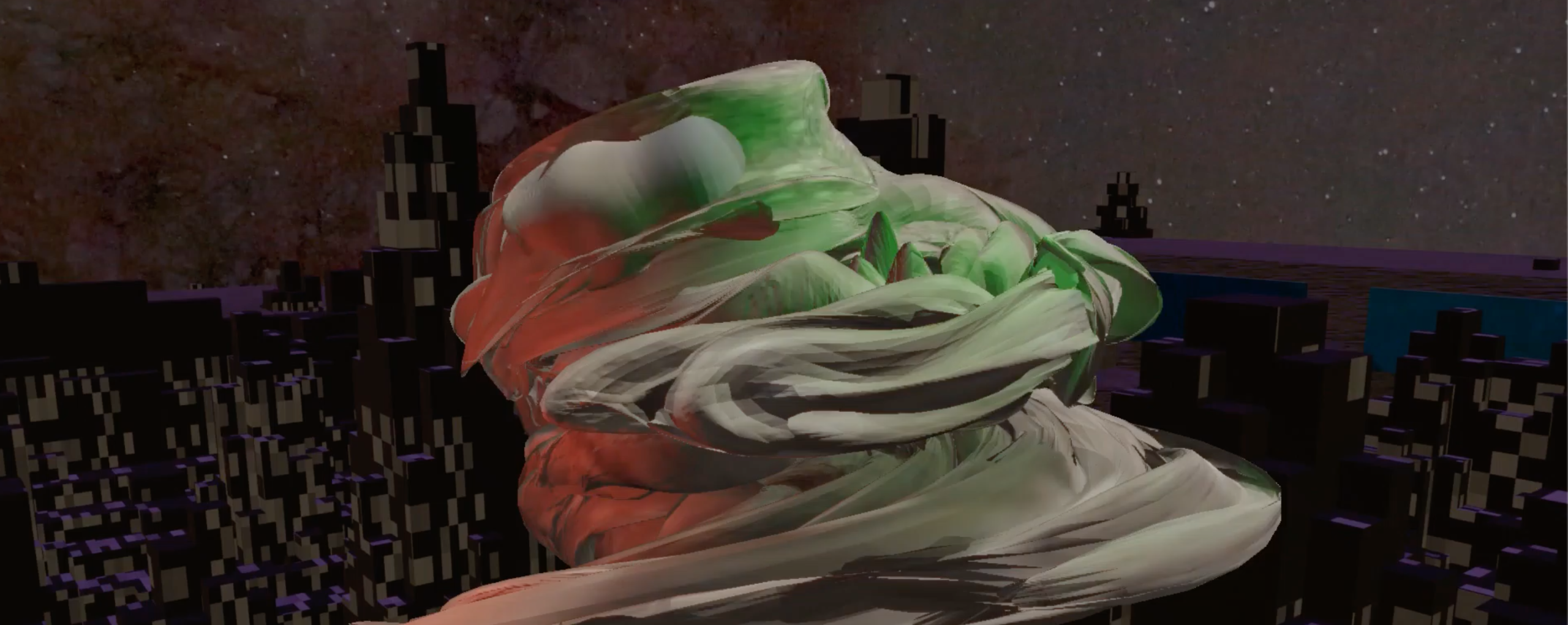
Our session with Laurie Ramsell also encouraged us to consider constructs of personhood and how it has been imbued into our culture. As a response to the workshop, Pietro, Hector and I worked with Antonio to create This home was not built to last. Our response examined the concretisation of our surroundings and alternative (more positive!) ways that we could think about estates like Broadwater Farm in Tottenham. We believe that our cityscapes can adapt to become less toxic and healthier, towards a more pluralistic re-imagining of our futures. Ultimately, Antonio’s visuals glitch towards the cornucopian organic: from an image of a formless, sick cityscape towards a space of wellness.
’Now I can replace it all with water...’
And how about utilising the spaces around us to make a composition? That’s exactly what we did when we worked with guest artist Matthew Evans to turn the Barbican into a composition using his method of pixel sonification. We learned about the physics of sound and how it passes through us and how humans are subtractive sythesisers.
This culminated in our piece, Feeling the Gallery. The soundscape that I made had its foundation in group recordings of sounds from our session with Matthew, made using visual data taken from micro and macro images of the Brutalist playground that is the Barbican and incorporating poetry by Hector and myself.
As the accompanying essay says –
‘By changing sound design parameters, we can further interrogate binary notions of sound needing to be divided between the human and the technological.’
Often fears around the future of technology can have an ableist bias. Let’s think beyond this and celebrate certain advancements. Work on accessible music tech, such as that done by Matthew Evans with charities like Sense, helps people who might otherwise not make music in a traditional setting to create sounds of their own. This multi-sensory approach allows for more possibilities for those looking to create, and recognises how tangible sound can be.
Privacy and Evasive Techniques
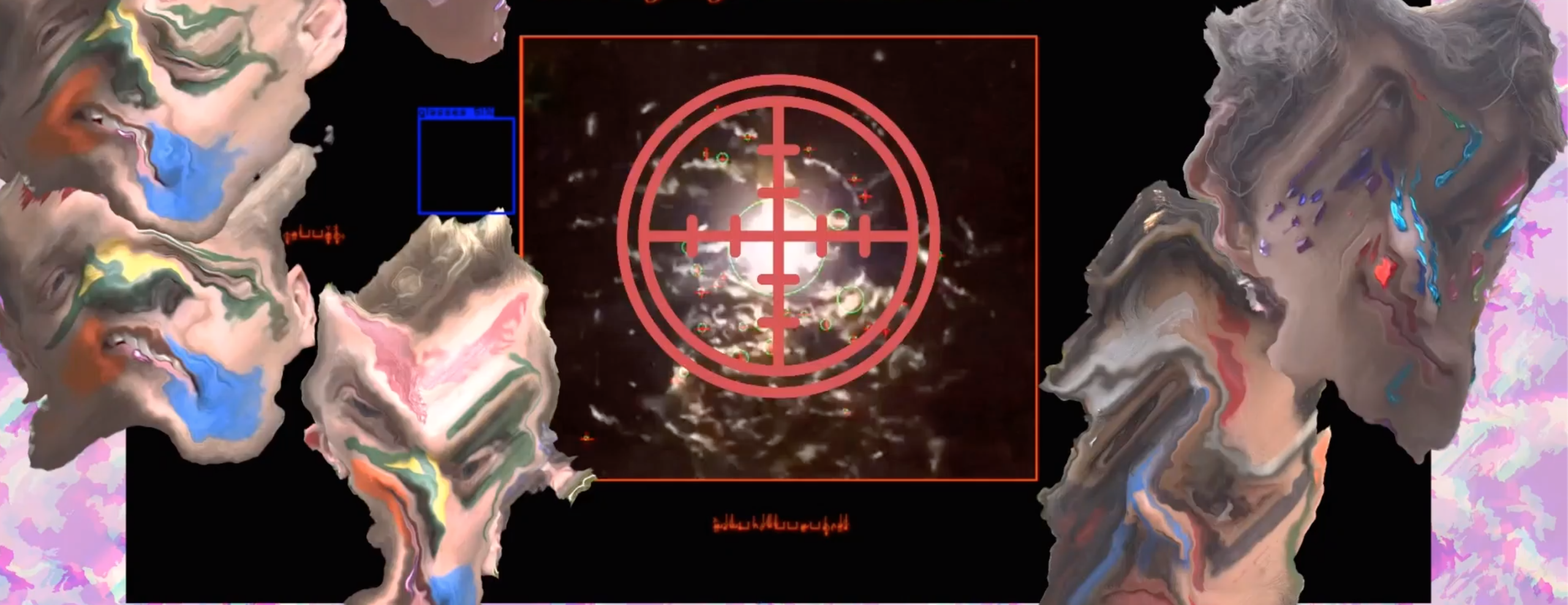
Hierarchies of detection are becoming more pronounced as surveillance software entrenches itself into our daily life. This is something to remain cautious of, as these systems have proven to be harmful and racially biased, with recent iterations of such technology by the Metropolitan Police leading to the wrongful arrest of a 14-year old black schoolboy in Westfield Stratford due to misidentification.
To deepen our understanding on this topic, Yoke Collective joined us for a Self: FEED workshop on the implications of facial recognition technology. We learnt how to make face filters of our own via SPARK AR and how to protect ourselves from facial recognition software using CV dazzle face paint (anti-surveillance make up). Many of these preventative measures are still in-flux, but it is becoming ever urgent to attempt awareness on how to camouflage our identities in order to reach some level of privacy.

The Design Yourself artists experiment with face filters and CV Dazzle face paint to deter facial recognition technology
The Design Yourself artists experiment with face filters and CV Dazzle face paint to deter facial recognition technology
WhatsApping Vangelis about the relationship between technology and privacy, he told me: ‘The promise of a potential ideal direct democracy co-exists with the fear of inescapable dystopian scenarios. Information is shared carelessly for comfort or instant gratification, but we need to be mindful of privacy and encryption –
‘How do we earn digital forgiveness?’
The existence of technological tools providing unprecedented privacy sounds like an oxymoron. Martyrs of these dynamics might become the new guerrilla revolutionaries.’
As a response to the workshop Pietro and Vangelis worked with Antonio to create Evasive Techniques. Pietro contributed to this video with an audio-visual piece delving into the relationship between movement tracking technology and ritualistic performances. As a response to the latter, Vangelis wrote a poem in Newspeak, the artificial language from George Orwell’s novel, 1984.
The poem is written from the perspective of a voyeuristic tyrant who craves to mentally dominate a rebel. Crucially, technology is the predator in this artistic response.
Relinquishing Decision Making to an Algorithm
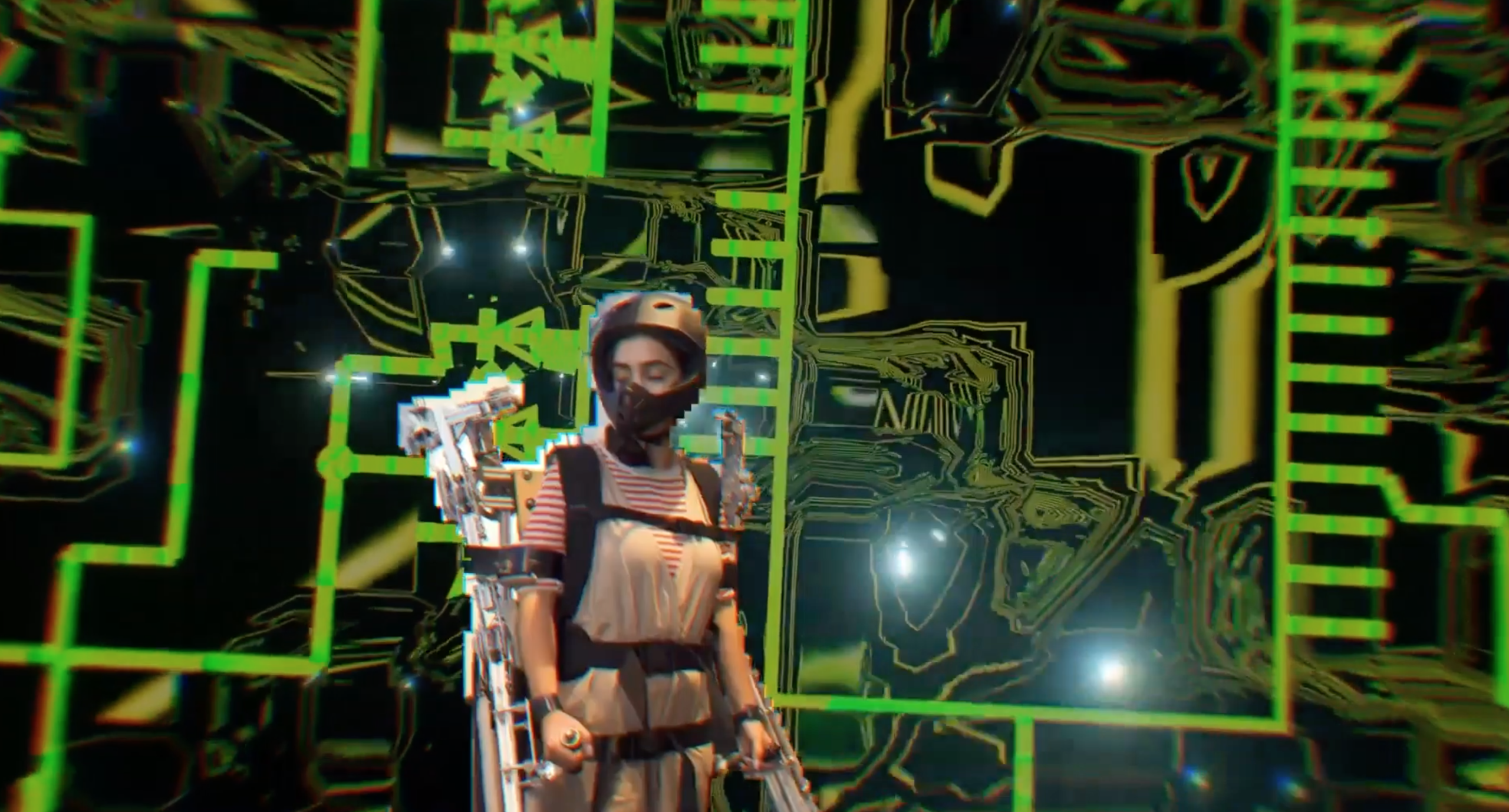
It has been argued that with the increasing autonomy of AI, humans will become one of two things: gods, or useless. This is not a new perspective but one that has resurfaced with the success of writer, Yuval Noah Harari. But how does it feel to relinquish control for artistic gain?
We had a chance to work with New Movement Collective and Fenyce Workspace who led a practical workshop introducing us to their prototype project, XO, exploring how machines can control and aid human movement through choreography.
It could be freedom, to outsource movement of our bodies to buttons or to another robot in charge of those buttons, DJing the human body. So we think about agency, empathy and the ease of which we relinquish control. After using The Influencer, a machine that pushes the boundaries of interactivity to dance the human body, musical artist Cleo Thomas looked at the group almost dreamily –
‘I forgot I had to support my legs. The machine was in charge. Being with the machine, it’s therapeutic because you don’t have to do anything’.
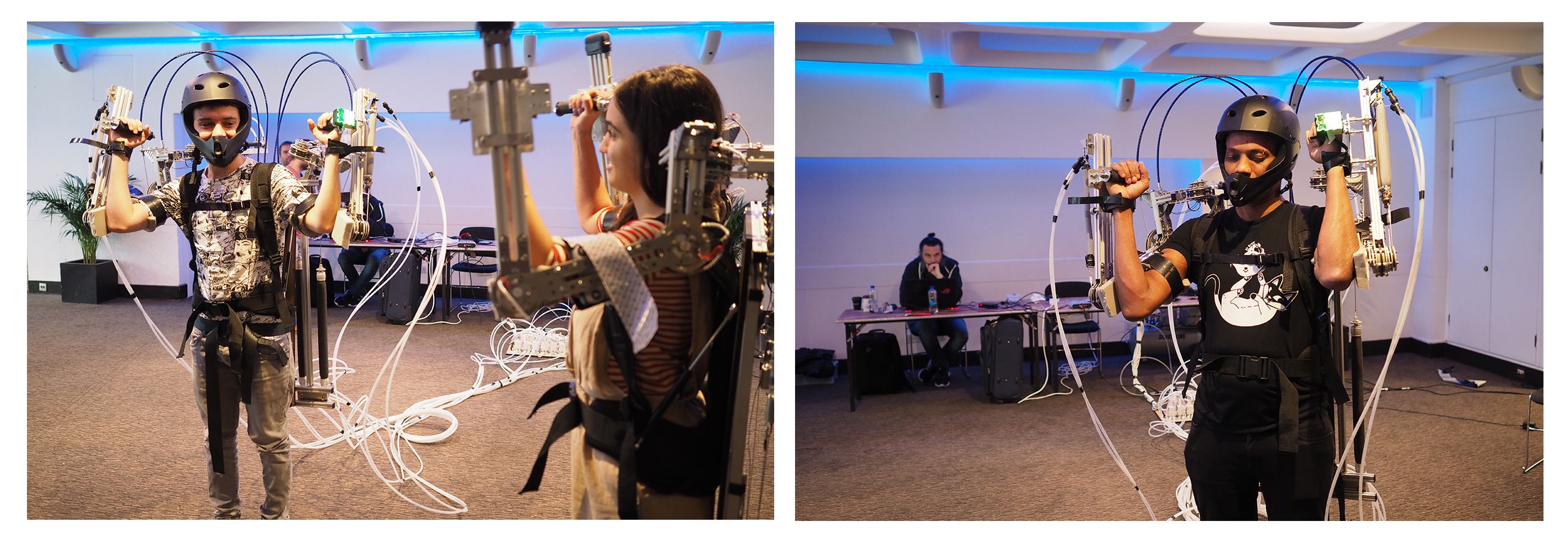
Antonio, Tice and Vangelis experiment with the XO prototype robot
Antonio, Tice and Vangelis experiment with the XO prototype robot
Would you give total control to a machine to choreograph you? James Bridle, in the book New Dark Age: Technology and the End of the Future, describes this as a ‘cognitive shortcut’, whereby the brain takes the road of the least cognitive effort when served up help by automated assistants. In response to these questions and our experience with New Movement, Pietro and I worked with Antonio to create, Party for the End of The World. The visuals show the Design Yourself crew pirouetting one another while using project XO.
‘I am not a representation of the human body, but a different thing / Soon I’ll move outside what’s humanly possible.’
This line from the poem in the piece speaks to the unhelpful tendency with which we anthropomorphise robots. If we see mechanistic involvement as more collaborative rather than human resolve superimposed over algorithms, the creative potential of projects such as these would expand.
I spoke to Pietro about this idea of collaboration. On the future of sound and how this relates to algorithmic advancement, he says:
‘We got to a point where software synthesizers have become unrivalled in terms of sonic capabilities, on the one hand it has made the means of production extremely accessible but on the other, these mammoth computational powers risk clogging up the creative outputs. The more we go down the route of applying computation to creative outputs the more it seems to be necessary to maintain a physical interaction with the process. We can notice this trend in the resurgence of modular synths and in the quest for interactivity and immersive experience in contemporary creative practices. What excites me the most about this relationship is how computer algorithms can assist composition and performative processes in terms of arrangement, sequencing and real time sound manipulation – in my view the future of sound can only exist as a collaboration, where machines can not only help us break out from the standardisation of compositional structures but where, ultimately computation remains a tool and not an end in itself.’
Design Yourself has become a tool that gives the stimulus and language to articulate our interest in human-data interaction from a creative standpoint.
The last year has helped us to put these topics into HD for ourselves. Antonio put this programme together with Chris Webb, Senior Producer for Barbican Guildhall Creative Learning, to encourage us to take a critical look at technology. Recently, he shared one of the things that stood out for him about the timing of the project. ‘With the rapid pace of development we are in danger of missing the opportunity to look at how, and if, technological developments are of benefit to our environment and us.’ Chris always encouraged us to ask more from each session and challenge our usual methods of art making through our responses. Asking about his thoughts on the project, he said:
‘Design Yourself presented the Creative Learning team with an opportunity to explore the potential of all things digital, not only looking at the challenges and opportunities that technology brings to the creative process, but also challenging us to look at how we commission, exhibit and share digital work. In a world where we are overloaded with content and digital is often approached as a binary exchange (we make content, you consume it) it was a joy to stop, pause and go deeper into what making digital art means and explore how technology enhances our creativity as humans.
At a time when we are presented with Black Mirror versions of the future, it was reaffirming to work with a collective of emerging artists who looked for the potential of technology. Of course, the group acknowledged the many philosophical and ethical quandaries that humans have built-in to technology, but through the support of Antonio and the other guest artists, they found ways to manipulate technology, expose its human engineered biases, and create a portfolio of work that is timely, poignant, and forward looking.’
In a climate of constant self-optimisation it is easy to look at what it means to be human through a reductive capitalist lens.
Through engaging with contemporary debate, we can avoid outdated perspectives on what it means to be human, and so as a collective, we see our work as searching for better questions and more open answers (and through this a resource for others to do the same).
Words by Tice Cin.
You can follow the Design Yourself Collective on Instagram @designyourselfcollective
Collaborative process
Antonio created a HOTGLUE site for us which we used as chatroom, drawing board and play area for our video responses. We created so much together beyond these six videos and are looking forward to sharing more over time.
About Barbican Guildhall Creative Learning
Barbican Guildhall Creative Learning is a creative alliance pioneering new models for cultural learning across the art forms. Our mission is Creative Skills for Life and every year we deliver more than 40 programmes and events alongside 150 partners to over 22,000 participants.